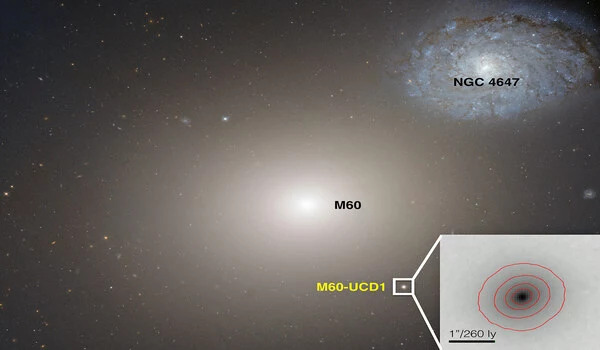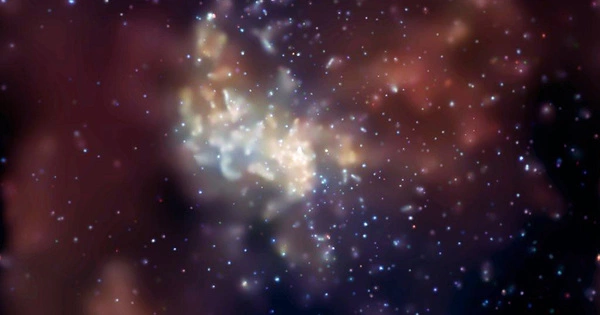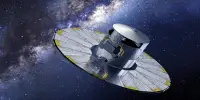An undetected intermediate-mass black hole lurking in a dwarf galaxy revealed itself to astronomers when it gobbled up an unlucky star that strayed too close. The shredding of the star, known as a “tidal disruption event,” or TDE, produced a flare of radiation that briefly outshone the combined stellar light of the host dwarf galaxy and could help scientists better understand the relationships between black holes and galaxies.
Astronomers captured the flare using the Young Supernova Experiment (YSE), a survey designed to detect cosmic explosions and transient astrophysical events. An international team led by scientists from UC Santa Cruz, the Niels Bohr Institute at the University of Copenhagen, and Washington State University published the discovery in Nature Astronomy.
“This discovery has sparked widespread excitement because we can use tidal disruption events not only to find more intermediate-mass black holes in quiet dwarf galaxies, but also to measure their masses,” said coauthor Ryan Foley, an assistant professor of astronomy and astrophysics at UC Santa Cruz who helped plan the YSE survey.
According to first author Charlotte Angus of the Niels Bohr Institute, the team’s findings provide a baseline for future studies of midsize black holes.
This discovery has sparked widespread excitement because we can use tidal disruption events not only to find more intermediate-mass black holes in quiet dwarf galaxies, but also to measure their masses.
Ryan Foley
“The fact that we were able to capture this midsize black hole whilst it devoured a star offered us a remarkable opportunity to detect what otherwise would have been hidden from us,” Angus said. “What is more, we can use the properties of the flare itself to better understand this elusive group of middle-weight black holes, which could account for the majority of black holes in the centers of galaxies.”
Supermassive black holes are found at the centers of all massive galaxies, including our own Milky Way. Astronomers conjecture that these massive beasts, with millions or billions of times the mass of the sun, could have grown from smaller “intermediate-mass” black holes with thousands to hundreds of thousands of solar masses.
One theory is that the early universe was teeming with small dwarf galaxies with intermediate-mass black holes, which led to the formation of such massive black holes. These dwarf galaxies would have merged or been gobbled up by more massive galaxies over time, their cores combining each time to build up the mass in the growing galaxy’s center. This merger process would eventually result in the formation of today’s supermassive black holes.

“If we can understand the population of intermediate-mass black holes out there — how many there are and where they are located — we can help determine if our theories of supermassive black hole formation are correct,” said coauthor Enrico Ramirez-Ruiz, professor of astronomy and astrophysics at UCSC and Niels Bohr Professor at the University of Copenhagen.
But do all dwarf galaxies have midsize black holes?
“That’s difficult to assert, because detecting intermediate-mass black holes is extremely challenging,” Ramirez-Ruiz said.
Traditional black hole hunting techniques, which look for actively feeding black holes, are frequently insufficiently sensitive to detect black holes in the centers of dwarf galaxies. As a result, only a small percentage of dwarf galaxies are known to contain intermediate-mass black holes. Finding more midsize black holes with tidal disruption events may aid in resolving the debate over how supermassive black holes form.
“How supermassive black holes form is currently one of the biggest open questions in astronomy,” said coauthor Vivienne Baldassare, professor of physics and astronomy at Washington State University.
The team was able to detect the first signs of light as the black hole began to devour the star thanks to data from the Young Supernova Experiment. Because the duration of these events can be used to calculate the mass of the central black hole, capturing this initial moment was critical to determining how big the black hole was. Ramirez-Ruiz and coauthor Brenna Mockler at UC Santa Cruz proposed this method, which had previously only been shown to work well for supermassive black holes.
“This flare was extremely fast, but because our YSE data provided us with so much early information about the event, we were able to pin down the mass of the black hole using it,” Angus explained.














